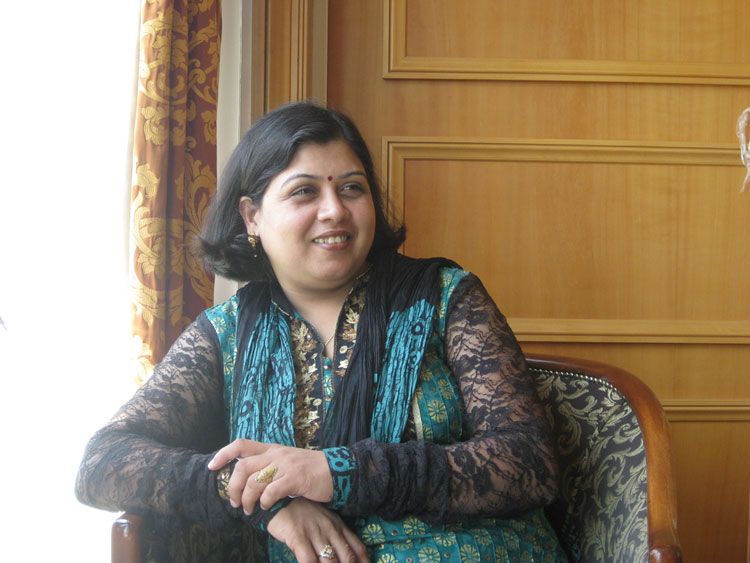Clients often approach me wondering about the mysteries of charisma and executive presence. Most start this conversation with the assumption that one is born or endowed with these gifts. So, their conversation often starts with, What can I do to deal with these attributes, which my competitors have in abundance and I dont?
I find such conversations both puzzling and frustrating, and am left wondering what causes these clients to think that they are at a disadvantage because of their lack of either charisma or executive presence. I thinkin fact, I knowthat they are certainly at a disadvantage because they THINK this, but I am not sure that they have come to realize that both of these traits are practiced behaviors and not something one is endowed with. So, the purpose of this blog is to lay down the basics of what behaviors provide one the ability to carry themselves with charisma and with executive presence.
Both, charisma and executive presence can be hard to define but are relatively easy to spot. Recent studies and research suggest that both these attributes are definable and replicable. The biggest obstacle to achieving either or both of these is, of course, your own limiting mindset.
Scientists who study these qualities say it’s less a natural gift bestowed only upon some lucky individuals and more a set of behaviors that anyone can learn. John Antonakis, a professor of organizational behavior at the University of Lausanne in Switzerland and his colleagues have boiled down charisma to a set of practiced behaviors. They’ve found that charisma can be taught, practiced, and internalized as any other skill. In my coaching practice I have come to realize that executive presence, too, falls in the same category that displays certain unmistakable behaviors.
Those behaviors include both verbal and nonverbal strategies. If you watch the Simon Sinek video (see the link below) you can see that these can be boiled down to a list that I have made here (derived from the original Antonakis list of 12 items):
https://youtu.be/e80BbX05D7Y
Verbal tactics:
Metaphors, similes, and analogies; Stories and anecdotes (especially highly personal ones)
Contrasts and Rhetorical questions
Three-part lists
Expressions of moral conviction delivered in a language that resonates
Statements that reflect the group’s sentiments (the group that you are trying to persuade)
Setting high expectations for yourself and showing instead of just telling
Conveying confidence that the goals can be achieved; knowing what language communicates that well
Nonverbal tactics:
Body gestures
Facial expressions
Animated voice tone
Connecting with the audience from the get-go (see the Simon Sinek video)
In 2011, Antonakis, along with Marika Fenley and Sue Liechti at the University of Lausanne, taught these tactics to 34 middle managers at a large Swiss company. At the study’s outset, the researchers solicited 360-degree feedback from bosses, peers, and subordinates on how charismatic the managers were. (The employees providing the ratings didn’t know which managers at their company were doing the training, so they couldn’t be biased in that way.)
The researchers started the training by having the managers watch video clips of charismatic individuals, pausing the videos every few seconds so the managers could learn to identify specific behaviors that constituted charisma.
Antonakis recognized that many of the managers were skeptical about the idea that, if they copied these behaviors, people would believe they were charismatic, too. Surely, they thought, people would notice that they were deliberately asking questions or changing the tone of their voice. But Antonakis explained that charisma is generally something you sense on an intuitive level, without being able to identify exactly where it’s coming from.
The researchers had the managers role-play interactions using the charismatic leadership tactics they’d learned, and gave them feedback on how well they deployed them. Over the course of the next few weeks, the managers were required to practice the charismatic leadership tactics, both alone and with the researchers.
Three months into the study, the researchers asked for 360-degree feedback again to see if the training had been successful. Sure enough, the managers who had undergone the training were not only rated as more charismatic, but also as more effective leaders, both compared to how they’d been rated before and to the group that didn’t receive the training.
Why is charisma such an important component of effective leadership?
According to Antonakis, one reason is that charisma helps a leader provide reassurance to her stakeholders whether those stakeholders are voters, employees, or investors.
“It makes people feel like the person who’s in charge will make the vision happen,” he said.
At the same time, Antonakis is quick to note that charisma isn’t the be-all and end-all of effective leadership. A manager needs to have enough expertise to know what he’s doing charisma is the “icing on the cake” that helps them communicate their ideas.
Executive presence, on the other hand is your ability to influence others with your persuasive powers and your authenticity.
For leaders who want to develop charisma, and executive presence preparation and practice are key.
One of the best and simplest ways to develop charisma and executive presence is to pay close attention to how charismatic people speak in public and see how their listeners react. You can also watch film clips of speeches by great leaders such as Martin Luther King, Jr., Bill Clinton, JFK, and others. It can also help, in contrast, to watch leaders who fail to inspire confidence when they speak (e.g., George W. Bush).
Another alternative is to film yourself speaking, which allows you to realize how you’re coming across to others whether you’re mumbling or demonstrating any tics, for example.
Of course, the goal of becoming a more charismatic leader isn’t simply to get people to like you though that’s certainly a favorable outcome. Charisma also allows you to inspire others and motivate them to do be the best they can be. Of course, charisma has its darker side; those who fall for someones charisma can be easily manipulated to undesirable ends.
So, the next time you are intimidated by someones charisma or executive presence, do not be daunted by what they project to finesse you, learn how you can beat them by practicing some learned behaviors!
Good luck!
Acknowledgement: This blog is mostly based on a recent article, How to Become a More Charismatic Leader, by Shana Labowitz published in the Business Insider on Dec. 30, 2015.
| About Author | |

|
Dilip has distinguished himself as LinkedIn’s #1 career coach from among a global pool of over 1,000 peers ever since LinkedIn started ranking them professionally (LinkedIn selected 23 categories of professionals for this ranking and published this ranking from 2006 until 2012). Having worked with over 6,000 clients from all walks of professions and having worked with nearly the entire spectrum of age groups—from high-school graduates about to enter college to those in their 70s, not knowing what to do with their retirement—Dilip has developed a unique approach to bringing meaning to their professional and personal lives. Dilip’s professional success lies in his ability to codify what he has learned in his own varied life (he has changed careers four times and is currently in his fifth) and from those of his clients, and to apply the essence of that learning to each coaching situation. After getting his B.Tech. (Honors) from IIT-Bombay and Master’s in electrical engineering(MSEE) from Stanford University, Dilip worked at various organizations, starting as an individual contributor and then progressing to head an engineering organization of a division of a high-tech company, with $2B in sales, in California’s Silicon Valley. His current interest in coaching resulted from his career experiences spanning nearly four decades, at four very diverse organizations–and industries, including a major conglomerate in India, and from what it takes to re-invent oneself time and again, especially after a lay-off and with constraints that are beyond your control. During the 45-plus years since his graduation, Dilip has reinvented himself time and again to explore new career horizons. When he left the corporate world, as head of engineering of a technology company, he started his own technology consulting business, helping high-tech and biotech companies streamline their product development processes. Dilip’s third career was working as a marketing consultant helping Fortune-500 companies dramatically improve their sales, based on a novel concept. It is during this work that Dilip realized that the greatest challenge most corporations face is available leadership resources and effectiveness; too many followers looking up to rudderless leadership. Dilip then decided to work with corporations helping them understand the leadership process and how to increase leadership effectiveness at every level. Soon afterwards, when the job-market tanked in Silicon Valley in 2001, Dilip changed his career track yet again and decided to work initially with many high-tech refugees, who wanted expert guidance in their reinvention and reemployment. Quickly, Dilip expanded his practice to help professionals from all walks of life. Now in his fifth career, Dilip works with professionals in the Silicon Valley and around the world helping with reinvention to get their dream jobs or vocations. As a career counselor and life coach, Dilip’s focus has been career transitions for professionals at all levels and engaging them in a purposeful pursuit. Working with them, he has developed many groundbreaking approaches to career transition that are now published in five books, his weekly blogs, and hundreds of articles. He has worked with those looking for a change in their careers–re-invention–and jobs at levels ranging from CEOs to hospital orderlies. He has developed numerous seminars and workshops to complement his individual coaching for helping others with making career and life transitions. Dilip’s central theme in his practice is to help clients discover their latent genius and then build a value proposition around it to articulate a strong verbal brand. Throughout this journey, Dilip has come up with many groundbreaking practices such as an Inductive Résumé and the Genius Extraction Tool. Dilip owns two patents, has two publications in the Harvard Business Review and has led a CEO roundtable for Chief Executive on Customer Loyalty. Both Amazon and B&N list numerous reviews on his five books. Dilip is also listed in Who’s Who, has appeared several times on CNN Headline News/Comcast Local Edition, as well as in the San Francisco Chronicle in its career columns. Dilip is a contributing writer to several publications. Dilip is a sought-after speaker at public and private forums on jobs, careers, leadership challenges, and how to be an effective leader. |
Website: http://dilipsaraf.com/?p=2654
Disclaimer: Please use this channel at your own discretion. These articles are contributed by our users. We are not responsible or liable for any problems related to the utilization of information of these articles.












